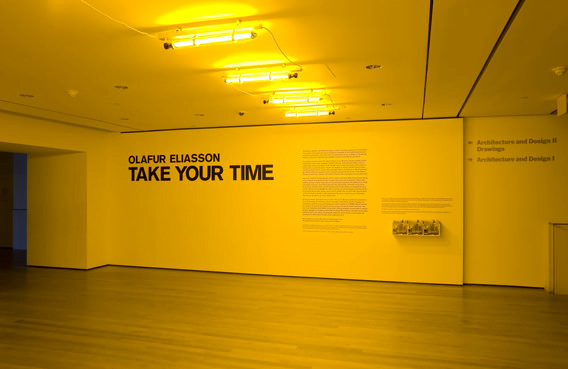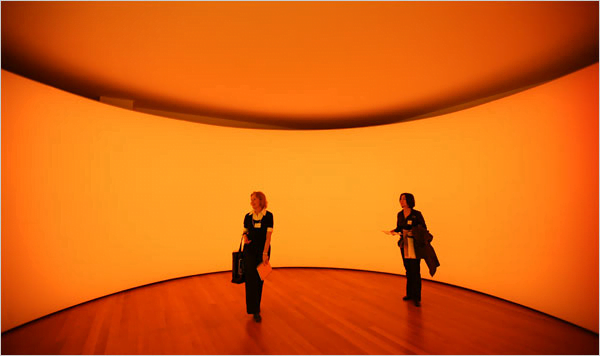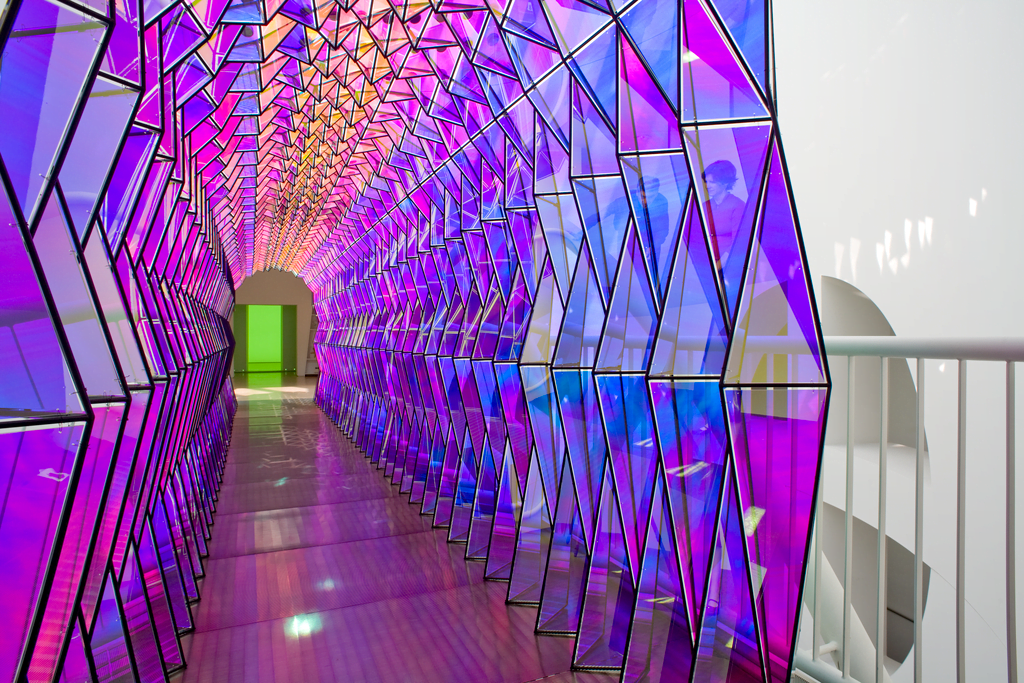Memoriesforart » Artists » Olafur Eliasson

More Facts
Name: Ólafur
Surname: Elíasson
Lives & Works: Copenhagen
Nationality: Denmark
Date of Birth: 1967
Period: Post-War
Movement: Contemporary art
Table of Contents
You may not instantly recognize the name Olafur Eliasson, but you have likely encountered his thought-provoking artworks. As one of the most renowned installation artists of our time, Eliasson creates multi-sensory experiences that inspire wonder and shift perceptions.
For over 30 years, he has pushed the boundaries of contemporary art through his mastery of light, space, and natural elements. His large-scale works have graced prestigious museums and public spaces around the globe, from the Tate Modern in London to the Palace of Versailles in France.
From his early experiments with light and shadow to his more recent artistic call to action on climate change, Eliasson’s creative vision and social consciousness have made him a leader of socially engaged art. His art reminds us that we can shape the reality we inhabit through the eyes with which we choose to see. His story is a testament to the power of human creativity and the possibility of building a better future together.
This article explores the complete story of Olafur Eliasson, the visionary Icelandic-Danish artist who illuminates ideas and opens our eyes to new ways of understanding ourselves and our relationship with the world around us.

Olafur Eliasson was born in Copenhagen, Denmark in 1967. His father was Icelandic. He grew up in Iceland and Denmark, spending most of his childhood summers in Iceland. This early exposure to Iceland’s dramatic landscapes and seasonal changes would later influence his art.
Eliasson studied at the Royal Danish Academy of Fine Arts from 1989 to 1995. He was particularly influenced by conceptual art and land art. After graduating, he moved to Cologne, Germany where he established his studio. For the next decade, he would split his time between Copenhagen, Berlin, and New York City.
In the mid-1990s, Eliasson started experimenting with light, color, and geometric forms. With fame came larger-scale projects and public art. Eliasson created temporary installations around the world, from waterfalls in New York City to a sun-like orb in London. He aims to stimulate dialogue about climate change and sustainable energy through his art. Eliasson proves that art can be a catalyst for awareness and social change.
Through his art, writing, and role as a public intellectual, Eliasson has become a leading voice on issues of ecology, sustainability, and human perception. His diverse body of work across mediums has made him one of the most influential contemporary artists today. By creating spaces of wonder, contemplation, and community, Eliasson’s art inspires us to be more aware of ourselves and our environments.

Olafur Eliasson is Danish–Icelandic artist known for sculpture and installation art using natural elements like light, water, and air.

In the 1990s, Eliasson’s work gained increased exposure and critical acclaim, cementing his status as an influential contemporary artist.
|
1993 |
Olafur Eliasson: The model room |
First solo exhibition at the Museum Boijmans Van Beuningen in Rotterdam |
|
1993 |
Beauty |
A yellow mono-frequency light bathed the entire gallery space. The ephemeral, immersive nature of his installations led to comparisons with American light and space artists like James Turrell. |
|
2003 |
The blind pavilion |
Represented Denmark at the 50th Venice Biennale |
|
2003 |
The weather project |
An enormous half-sun made of 200 yellow sodium lights illuminated a fine mist filling the hall, creating an ephemeral indoor microclimate. The installation was a massive public event, attracting over 2 million visitors during its run. |
|
2014 |
Riverbed |
Massive sculptures in Copenhagen |

As the 21st century progressed, Eliasson continued to push the boundaries of contemporary art. His works explored themes of perception, movement, experience, and participation on a grand scale.
One of Eliasson’s most well-known works was The Weather Project, installed at the Tate Modern’s Turbine Hall in 2003. The piece featured a giant sun made of 200 yellow sodium lamps, mirrors, and mist.
Viewers could bask in the warm glow and interact with the effects of the “sun” and “sky.” The Weather Project drew over two million visitors, demonstrating Eliasson’s ability to captivate audiences through immersive environments and manipulations of light and space.
Eliasson’s Waterfalls was a large-scale public art project commissioned by the Public Art Fund in New York. Four man-made waterfalls were constructed in New York Harbor, ranging from 90 to 120 feet in height.
The waterfalls highlighted the overlooked industrial waterfront and demonstrated how public art can transform people’s perception and experience of a familiar setting. Waterfalls attracted over 4 million visitors during its four-month installation.
At the Palace of Versailles in 2017, Eliasson debuted In the Presence of Absence, a solo exhibition spanning 11 rooms of the palace. The works included a waterfall in the King’s Chamber, a spinning portal, and prism-like structures that filled rooms with rainbows.
The show aimed to bring contemporary art into a historic setting, juxtaposing modernity, and baroque style. Eliasson’s artworks reimagined and activated the magnificent spaces of Versailles in unexpected ways.
As an environmentalist and social activist, Eliasson utilizes his art to raise awareness about climate change and other social issues. His works often incorporate natural elements and phenomena to highlight humanity’s connection with and impact on the environment.
Eliasson brought melting glacial ice from Greenland to city centers, visualizing the consequences of rising global temperatures through installations like:
The works were created to coincide with the UN Climate Change Conferences in Copenhagen and Katowice, advocating for policy changes to curb climate change.
Eliasson also co-founded the social startup Little Sun with engineer Frederik Ottesen. Little Sun creates solar energy products for use in off-grid communities. The project aims to provide clean energy access to the 1.2 billion people living without electricity while also raising climate change awareness worldwide.
Eliasson is dedicated to creating art that inspires positive social change. For The Weather Project (2003), he installed giant suns in Tate Modern’s Turbine Hall to experiment with how art can bring people together and facilitate shared experiences.
Your Uncertain Shadow (2010) addressed issues of migration and diversity in Stockholm. For his 2019 solo exhibition at Tate Modern, Eliasson focused the opening week activities around climate change, migration, and food equity—inviting chefs from migrant and disadvantaged communities to provide meals.